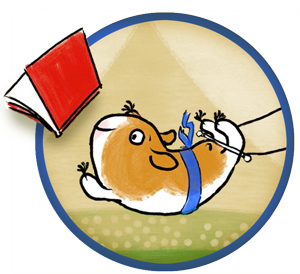GIF by Isabella Kung
We think our critiquing skills are pretty great here at the Soaring ’20s Picture Book Debuts blog, but one critique probably won’t take the winners of the MEGA SOARING ’20s CRITIQUE GIVEAWAY, or their stories, all the way to the finish line. That’s where critique groups come in. If you’re already in a critique group, you know what we’re talking about. If you’re not, what are you waiting for?!
Critique groups have helped our members:
1. Become part of a team.
“I see critiques as a team effort. The author’s hard work and vision is passed to another set of eyes, in order to set the story up for the best possible chance of success. I’m grateful each time I get to be a member of that team, whether as an author or a critiquer!”
—Elisa Boxer, author
THE VOICE THAT WON THE VOTE: How One Woman’s Words Made History (Sleeping Bear Press, spring 2020)
2. Stay in the game.
“I’ve had the same critique group for six years and would not be here without them. Period. Not only have they made me a better writer and better critique partner, but they have kept me from giving up when things get really hard. I am super indebted to them and also, I am super invested in their journey. When they sign with an agent, or tweak a manuscript to near perfection, or sell a manuscript, I am beside myself with joy!”
—Anna Crowley Redding, author
RESCUING THE DECLARATION OF INDEPENDENCE (HarperCollins, spring 2020)
3. Grow.
“Critiquing other writer’s manuscripts has been the next-best thing to improve my own writing, after reading picture books and writing!”
—Julie Rowan-Zoch, illustrator
LOUIS (Houghton Mifflin Harcourt, fall 2020)
4. Go deeper.
“Critiques have definitely helped me become a published author. My book, SATURDAYS ARE FOR STELLA, started with only two of its current main three characters. My critique group partners challenged me to deepen my story and guided me toward the third character who made all the difference in my story.”
—Candy Wellins, author
SATURDAYS ARE FOR STELLA (Page Street Kids, summer 2020)
5. Reimagine stories.
“For me, critiquing others’ stories has been essential. I’ve gained an ability to reimagine stories, and through these countless exercises, I have become better at editing my own stories.”
—Hope Lim, author
I AM A BIRD (Candlewick, fall 2020)
6. Build community.
“Critique partners can provide insight into what’s working or not in your story. They can give you new ideas. And best of all they can become your closest writing buddies.”
—Darshana Khiani, author
HOW TO WEAR A SARI (Versify/Houghton Mifflin Harcourt, spring 2021)
7. Gain objectivity.
“When you’re in the trenches, neck-deep in your writing or illustrating, it can be incredibly difficult to be objective about your work. That’s where critique comes in: Fresh eyes surveying the battlefield with the sole intent of making your work better.”
—John Herzog, illustrator
CLARINET AND TRUMPET (Houghton Mifflin Harcourt, summer 2020)
8. Honor diversity.
“For me sensitivity reads are invaluable. I’m an #ownvoices writer when it comes to main characters, but the world my characters live in must be diverse. Tha’'s where the critique group comes in to make sure I’m honoring and respecting that diversity.”
—NoNieqa Ramos, author
BEAUTY WOKE (Versify/Houghton Mifflin Harcourt, spring 2021)
9. Boost analytical skills.
“Critiquing other people’s work has sharpened my brain to become better at analyzing my own work. Not only that, I have become better at giving and receiving feedback. This skill is tremendously useful in the publishing industry where you have to go through many revisions with your agents, editors and/or art directors.”
—Isabella Kung, illustrator/author
No Fuzzball!, (Scholastic, summer 2020)
*One warning—because not every person is the right person to critique your work:
“Allow someone else to give you an objective opinion, but choose your critiquers wisely. Not everyone is experienced in giving critiques or in the craft of writing for children. It does make a difference. Any member of the Society of Children’s Book Writers and Illustrators (SCBWI) would most likely be capable and experienced enough to be helpful—but, generally, avoid asking friends, family and children for their feedback.”
—Mary Wagley Copp, author
WHEREVER I GO (Atheneum/Simon & Schuster, spring 2020)
**One caveat—because there are many paths to a successful career:
“I was too shy to join a critique group early on, but I’ve been supremely lucky to experience that creative process with my agent, Stephen Barr, instead. The work I’ve produced in collaboration is a direct result of him seeing more in my work than I’m able to see myself. His feedback has let me know when my art’s accidentally hit its sweet spot, helped me loosen my writing back up when I’m trying too hard, and pinpointed my best ideas hiding in plain sight (and upside down!).”
—Shelley Johannes, author/illustrator
MORE THAN SUNNY (Abrams, spring 2021)
Enter the MEGA SOARING ’20s CRITIQUE GIVEAWAY to win a picture book manuscript, dummy, or portfolio critique with one of these (and other) Soaring ’20s members. The contest runs through 11:59 p.m. September 15, 2019. Winners will be announced September 17!


